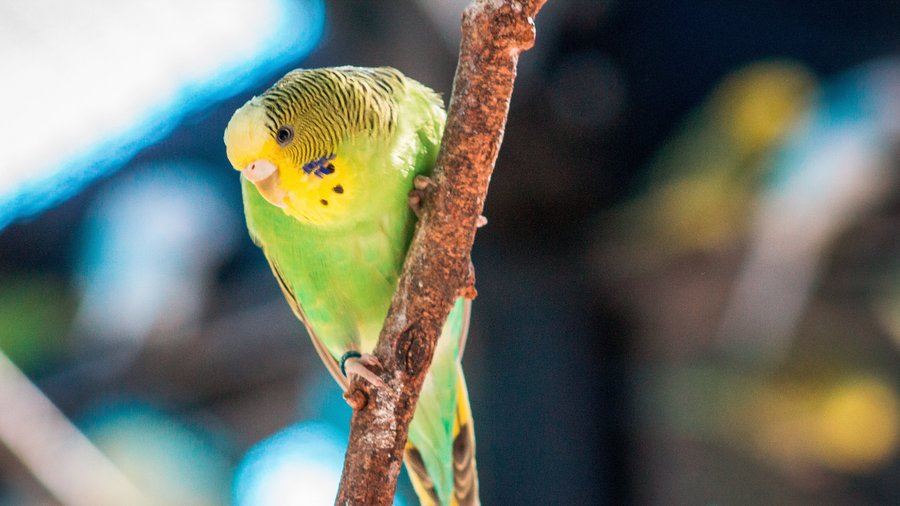Birds are intelligent creatures that perceive their surroundings with all their senses. In your home, you need to provide a bit of variety. Outside, nature takes care of that. Wind, weather, new sounds, and smells – all this brings a lot of variety. In addition, keeping your pets outside strengthens their health. Changing weather conditions are good for the immune system. And the sunlight ensures healthy skin and strong plumage.
For an outdoor aviary, the bigger the better.
If your birds can spend the whole summer outside, you should allow them as much free flight as possible. Four square metres is a good size. That way, your feathered friends have a long flight path, and you can comfortably enter the aviary. And you’ll provide everything to give your darlings the perfect summer retreat. Suitable aviaries can be found ready-made in stores – or you can do it yourself!
Tips for an all-round protected outdoor experience.
Safety first. That’s why you should pay attention to the following things in addition to the size of the aviary:
- First of all, the official requirements should be checked. For example, do you need to obtain a permit? Or do you have to consider special animal welfare requirements?
- Make sure that the aviary is securely closed at the bottom. This guarantees that potential intruders such as martens or weasels stay outside. A solid base plate or a grid that you sink into the ground is ideal. Also, make sure there are no gaps or holes anywhere and that the bars are firmly bolted to the frame everywhere.
- Guaranteed non-toxic building materials include hardwood, toy paint for painting, and spot-welded stainless steel mesh.
- The location should be protected and provide sun – but also shade – at all times. A place under a tree, next to shrubs, or against a building wall is ideal.
- At least two sides of the cage should be closed (e.g. by the adjacent building wall or a wooden panel). Depending on the bird species, an additional protected area may be recommended – or even mandatory. So your birds feel safe and can enjoy the summer relaxed.
- Double Plexiglas panels as cover protect against rain and wild bird droppings
Also when it comes to aviaries: the internal values count.
The interior of your aviary is at least as important as a sturdy exterior. A mixture of structure and free space is perfect. This way, your pets can use all dimensions of the aviary but also fly over the entire length. You can give free rein to your creativity. You can design the perching and climbing opportunities from natural woods. You can find out which ones are suitable here. Bird sand, beech wood granulate, or hemp litter are all suitable as bedding. You can give your birds a special treat by offering them a climbing tree. The more natural, the better!
For a move outside, timing is everything.
When is the right time to release your fledglings into their summer aviary? Temperatures should be stable between 15 and 25°C during the day, and night frosts should be over. If the temperatures in your home and outside are approximately the same, you are right with the move in any case. Ideally, you simply move your pets along with their accustomed housing. For transport outside, cover the cage with a dark cloth. The darkness calms your birds so that they can move into their summer residence without stress. It is best to place the cage slightly elevated in the aviary. This way, your fledglings can view their new surroundings from above. Soon the bravest one dares to go out into the great freedom. Little by little, the other birds will follow. You can leave the cage in the aviary for a few days. Maybe your birds want to sleep in their familiar home for the time being. Once they have moved into their new roosts, you can remove the cage.
And how does the way back work?
Now your feathered friends can enjoy their summer holiday to the fullest. But how and when will they return home? As far as timing is concerned, the same rules as in spring apply: The temperatures inside and outside should be approximately the same. Only night frost should be avoided. For a stress-free return, place the cage in an elevated position in the aviary. From now on, you should feed your pets exclusively in the cage. As soon as they visit the cage regularly, you can remove the sleeping facilities from the aviary. Your pets will then voluntarily spend the night in the cage, and you can bring them back into your home without too much fuss. This is easier with hand-tame birds but may be more difficult with others. In all circumstances, capture nets should be used only as a very last resort by professionals or after thorough instruction by a professional. Finally, once back in your home, lots of treats, play opportunities, free flight in the room, and your ideas on how to never get bored are waiting. That’s how winter flies by. And the next summer is sure to come.

